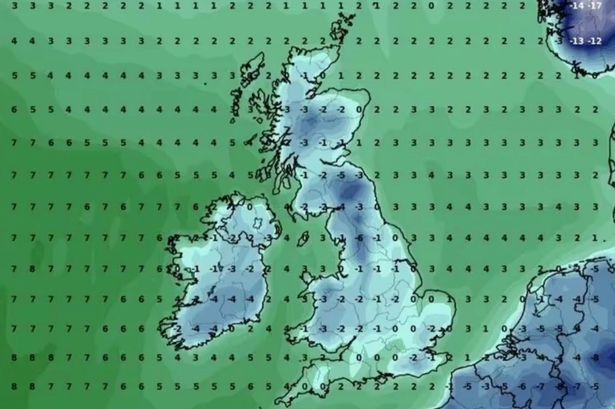The United Kingdom is bracing for an extended period of wintry weather, with forecasts indicating a persistent chill until at least mid-February. Current snow and temperature maps reveal a pattern of cold air entrenched over the British Isles, suggesting little respite from the recent icy conditions. Met Office warnings for snow and ice remain in place for various regions, and further warnings are anticipated as the cold snap continues. While brief milder interludes are possible, the overall trend points toward sustained low temperatures, with some areas potentially experiencing lows of -6°C. This prolonged cold spell has implications for travel, infrastructure, and public health, prompting authorities to advise caution and preparedness.
The persistence of this cold weather pattern is attributed to a combination of meteorological factors. A dominant high-pressure system stationed over Scandinavia is funneling frigid Arctic air southward across the UK. This air mass, originating over snow-covered landmasses, maintains its low temperature as it travels, contributing to the sustained cold snap. Furthermore, the presence of clear skies during the night allows for increased radiative cooling, further depressing temperatures. The combination of these factors creates an environment conducive to snow showers, particularly in northern and eastern regions, and widespread frost formation overnight.
The impact of this prolonged cold spell is multifaceted. Transport networks, including roads and railways, face disruptions due to snow and ice, leading to delays and cancellations. Pedestrians are also at risk of slips and falls on icy pavements. The energy demand surges as households and businesses increase heating to combat the freezing temperatures, putting strain on the power grid. Vulnerable populations, such as the elderly and homeless, are particularly susceptible to the adverse health effects of prolonged cold exposure, including hypothermia and respiratory illnesses.
Beyond the immediate challenges, the extended wintry weather raises concerns about potential longer-term consequences. The agricultural sector faces potential impacts on crops and livestock, with prolonged freezing temperatures potentially damaging winter wheat and impacting livestock welfare. Water pipes are also at risk of freezing and bursting, leading to disruptions in water supply and potential property damage. The prolonged period of cold weather can also exacerbate existing health conditions, putting additional strain on healthcare services.
Looking ahead, while some fluctuations in temperature are expected, the overall trend remains decidedly cold. Mid-February offers a glimmer of hope, with some forecast models suggesting a potential shift towards milder conditions. However, this remains uncertain, and the possibility of further cold spells before then cannot be ruled out. The Met Office continues to monitor the evolving weather situation and will issue further warnings as necessary. In the meantime, the public is advised to stay informed about the latest weather updates, prepare for potential disruptions, and take precautions to protect themselves from the cold.
The extended duration of this cold snap underscores the importance of preparedness and resilience in the face of challenging weather conditions. Investing in robust infrastructure, developing effective cold weather preparedness plans, and raising public awareness about cold weather risks are crucial steps in mitigating the negative impacts of such events. As climate patterns shift and extreme weather events become more frequent, building societal resilience to these challenges becomes increasingly vital. This current cold spell serves as a reminder of the importance of proactive measures to protect communities and infrastructure from the impacts of extreme weather.














